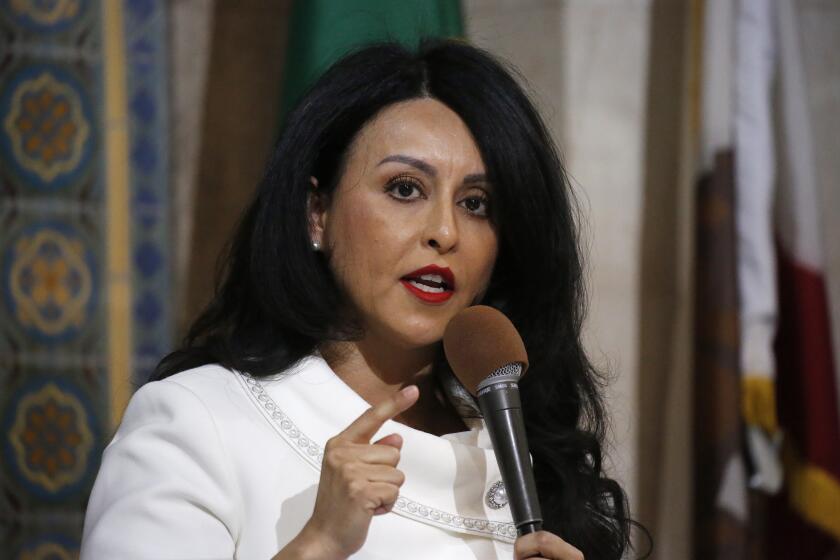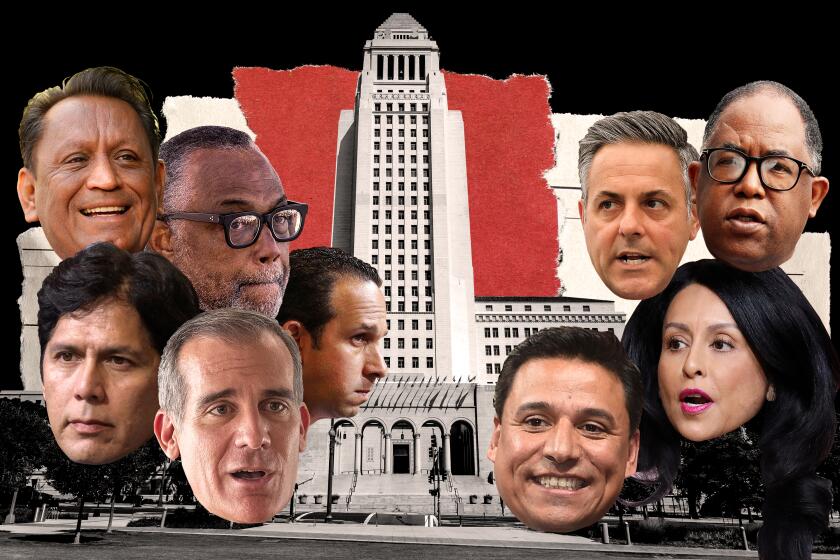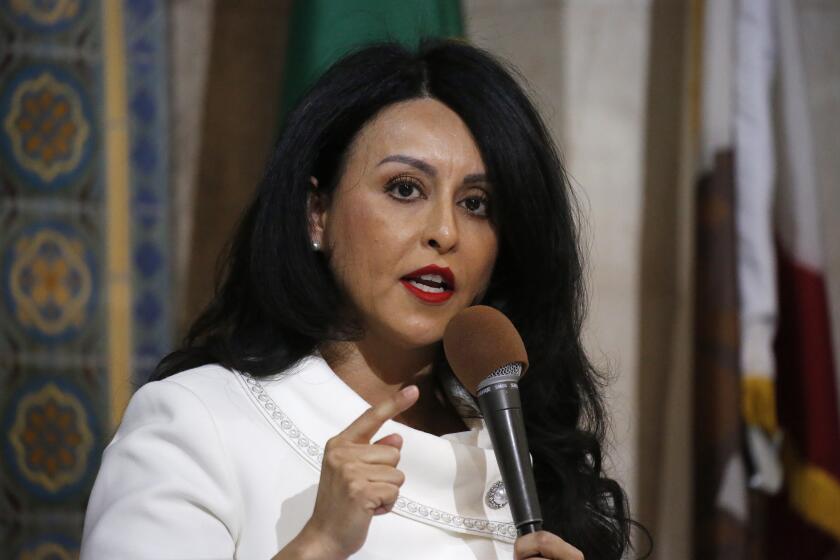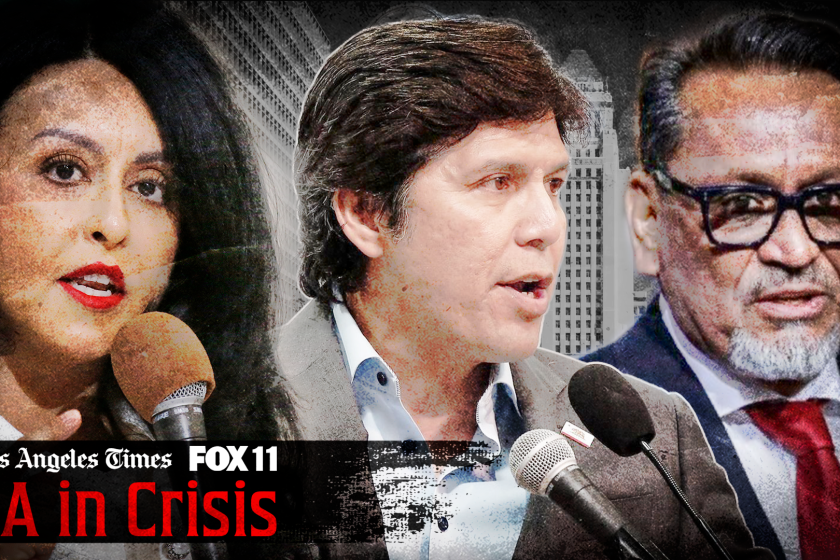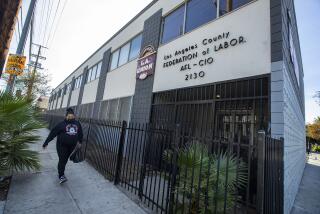Roots of L.A. City Council’s leaked audio scandal can be traced back decades
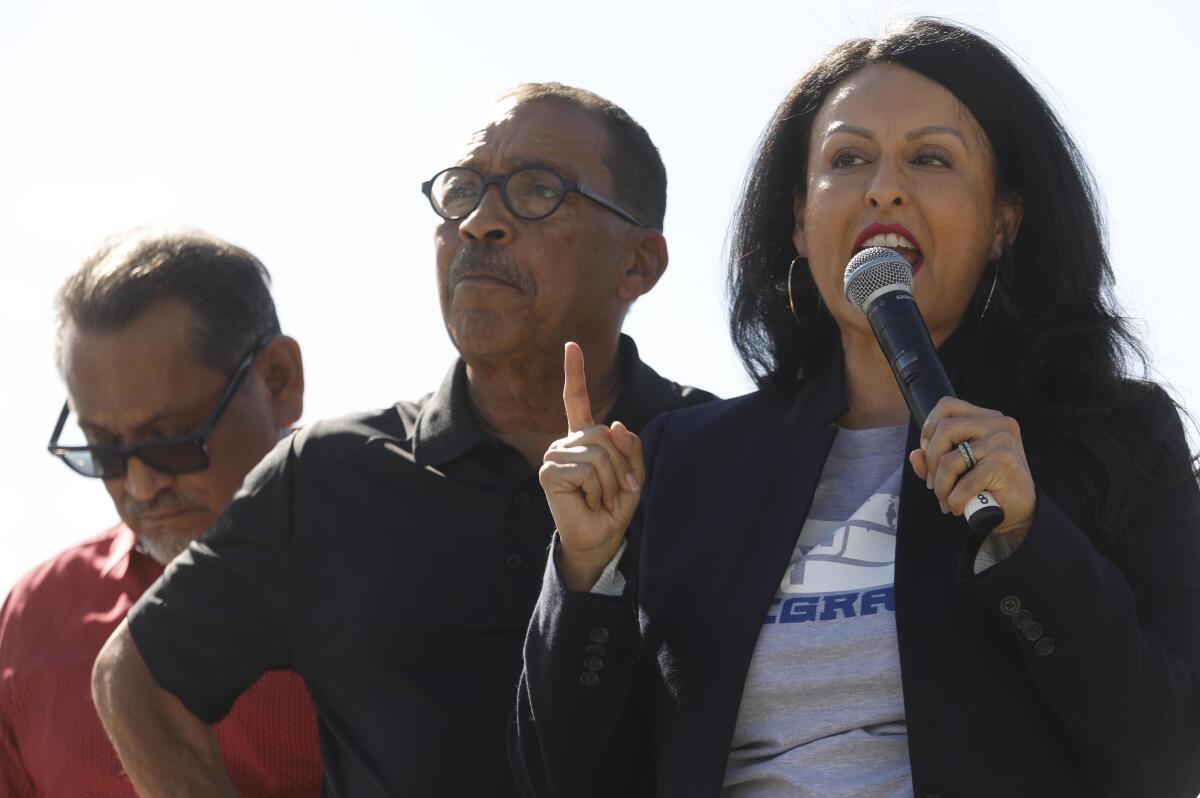
- Share via
In simple terms, the scandal that has sent Los Angeles politics into a tailspin began with a surreptitiously recorded private meeting last year involving three City Council members during which crude, racist comments were made.
But the back story for what one political observer calls this “foreseeable catastrophe” is more than a century old, dating to a time when local officials were deciding how they wanted to govern.
Inspired by a progressive movement sweeping across California, they chose a structure that has for the most part survived challenges and tweaks over the years, maintaining a council that is relatively small and unusually strong.
Audio of Councilmembers Nury Martinez, Kevin de León and Gil Cedillo speaking with labor leader Ron Herrera quickly became a new and incendiary issue in the Nov. 8 election.
“It breeds a certain kind of arrogance,” said Jim Newton, a public policy lecturer at UCLA and editor of the political magazine Blueprint. “What I heard on that tape, it was just unbridled arrogance.”
Now, as support grows for changes that would expand the number of council seats and create independent commissions to further dilute each member’s individual power, the city might have to look back for clues on how to move forward.
“It’s human nature — until things get to a crisis stage, it’s hard to get the energy together to do much about it,” said Raphael Sonenshein, executive director of the Pat Brown Institute for Public Affairs at Cal State L.A. “Now I think there is going to be a pretty open discussion.”
At issue is an October 2021 meeting at which then-Council President Nury Martinez, along with members Gil Cedillo and Kevin de León, sat down with labor leader Ron Herrera to strategize over redrawing council district boundaries to enhance Latino political power. The discussion included derogatory remarks about Black, Jewish, Armenian, Indigenous and gay people.
The Los Angeles political world is no stranger to scandal. In fact, there have been so many it can be hard to keep them straight.
When the recording went public, Herrera quickly stepped down as president of the Los Angeles County Federation of Labor. Martinez followed with her resignation; Cedillo and De León face growing pressure to do likewise.
The incident has sparked conversation about creating an independent redistricting commission to avoid the kind of backroom negotiations and gerrymandering at the heart of the furor. Other proposed changes would establish stricter ethics oversight and enlarge the council to as many as triple its current 15 seats.
Perhaps lost amid pondering what comes next is a reckoning about what happened before.
Los Angeles’ governance style was born of that statewide progressive movement in the years prior to World War I. Wary of big-city bosses who dominated politics in other parts of the country, officials created a structure that divided authority between the mayor, the council and civil servants.
The mayor had limited influence over council members; importantly, he needed their approval to fire most city department heads.
Beginning in the 1970s, former Mayor Tom Bradley found a way to operate in this “weak mayor” system by wielding the power of the budget and forging consensus with a council that largely shared his liberal views. Others haven’t been as successful.
During an October 2021 conversation with L.A. Councilmembers Gil Cedillo and Kevin de León and L.A.
“The use of ‘weak’ sometimes becomes an excuse for someone who isn’t a good mayor and can’t work with people to get things done,” Sonenshein said. “But there are times when we have to rethink the council’s role.”
Former Mayor Richard Riordan challenged the status quo in the late 1990s, looking to make municipal government operate more efficiently, like a private-sector corporation run by a chief executive.
Voters approved much of his vision with charter reform in 1999, giving the mayor greater authority to fire general managers and city commissioners. Council members lost some of their influence over those city commissions and saw their clout further diffused by the creation of neighborhood councils.
But a long-standing tradition remained intact as members continued to govern their districts with little interference from colleagues. This deference has always given the council what experts characterize as a large degree of autonomy.
Members have also retained the right to redraw districts every 10 years to reflect the latest federal census. Limited restrictions and oversight do not necessarily keep this process from succumbing to political considerations.
The city of Los Angeles lets elected officials draw the lines of their own districts in the decennial redistricting process. That’s why “asset gerrymandering” is a thing in L.A.
Incumbents can seek to group communities that will garner them and their allies the most votes, which can involve issues of race. They can conspire to maintain control over politically valuable “assets” such as parks, airports and major businesses.
Martinez, Cedillo, De León and Herrera were plotting just such maneuvers during their recorded conversation.
“Plenty of council members haven’t succumbed to that,” said Newton, who previously covered politics for The Times. “But it is a temptation.”
In addition to redistricting, the 1999 charter reform missed on another critical issue: council size.
Each of the 15 districts effectively represents more than 250,000 residents, a larger ratio than exists for many state legislatures. New York City, by comparison, has 51 districts. Charter reform leaders devised two potential expansions — to 21 and 25 seats — but worried about voter approval. They split the expansions into separate measures, both of which were defeated.
Tune in Thursday for ‘L.A. in Crisis: The Call for Change,’ a live town hall hosted by the Los Angeles Times and Fox 11.
“When you ask [voters] if they want more politicians, they say no,” said Fernando Guerra, a professor of political science at Loyola Marymount University. “And every time you talk about expanding the council, the council members are against it. They are the ones who say, ‘You don’t want more people like us.’”
Guerra suspects the traditional L.A. structure needs an autonomous ethics commission with its own investigative staff. He says: “At the end of the day, no matter what the rules are, just like water will always find the lowest level, politicians will always find the lowest level. We have to rebuild norms.”
If history is any guide, none of the changes now being discussed figure to be easy or neat, not in a city as sprawling and diverse as Los Angeles. But experts insist that doing nothing would be worse.
“There are moments when the public is willing to listen, to be engaged in the process,” Newton said. “This could be one of those moments.”
More to Read
Sign up for Essential California
The most important California stories and recommendations in your inbox every morning.
You may occasionally receive promotional content from the Los Angeles Times.

